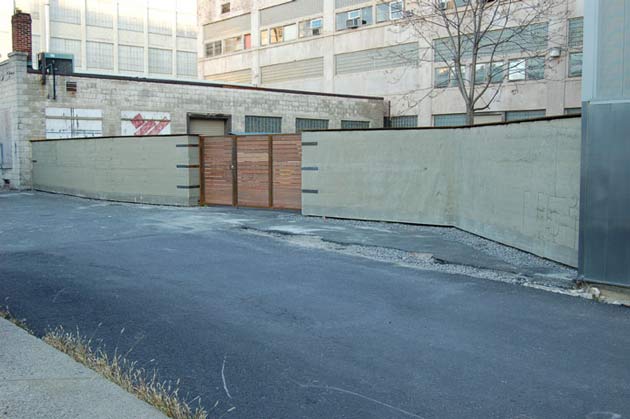The Great Wall of MIT

When it comes to scientific progress, sometimes you have to look back in order to move forward.
Parts of the Great Wall of China, still standing after more than 2,000 years, were built using a construction technique called rammed earth.
Now a group of architecture students at the Massachusetts Institute of Technology (MIT) have imitated the technique in an experiment aiming to confirm the usability of the ancient building method in the modern world.
Led by graduate student Joe Dahmen, the MIT team began work in September, using twelve tons of local Boston blue clay mixed with two parts sand and gravel. Their blend was packed, by hand and with the help of a pneumatic compactor, into a wooden shell that was removed once each section was complete and dry.
Two months later …
The finished wall runs 70 feet long and stands six feet tall. And, according to Dahmen, it was doing quite well nearly two months later.
"The wall is holding up fine," Dahmen told LiveScience recently. "Slight changes have been observed in the surface of the wall in a few areas but these are in keeping with expectations."
Sign up for the Live Science daily newsletter now
Get the world’s most fascinating discoveries delivered straight to your inbox.
Dahmen believes using rammed earth as opposed to concrete cement, one of the world's foremost construction materials, could have significant environmental benefits.
"By conservative estimates, production of cement accounts for 7 percent of carbon dioxide emissions into the atmosphere annually, worldwide," Dahmen explained. "In contrast, rammed earth is a minimally-processed natural material."
The product can't withstand the same kind of pressures as concrete, so it wouldn't be a suitable replacement for structures where strength is at a premium, such as bridges or tall towers.
These buildings aside, if rammed-earth architecture caught on across the United States as Dahmen hopes, architects would have some natural forces to consider.
Earthquake concerns
Would rammed-earth buildings hold up in an earthquake?
Dahmen is quick to point out the difference between the rammed-earth style used in his project and the mud brick homes often seen crumbled, post-disaster in third-world areas.
"Rammed earth, which is a monolithic mass (in effect, one giant earth brick, compacted in place), should fail in different ways from these buildings. Builders using rammed earth in California, an earthquake-prone region, have experimented with steel reinforcement of rammed earth with varying results," he said, admitting that the MIT wall project did not include any test for seismic durability.
If the technique ultimately proves robust enough for a 21st century revival, Dahmen sees a number of potential uses for rammed earth in the New England area at least, including the construction of sound barriers along Massachusetts' busy roadways.
"We can imagine scooping soil from the side of the highway and forming it into acoustically effective, environmentally sustainable walls which reflect the natural beauty of their surroundings," he said.
Why is yawning contagious?
Scientific consensus shows race is a human invention, not biological reality











